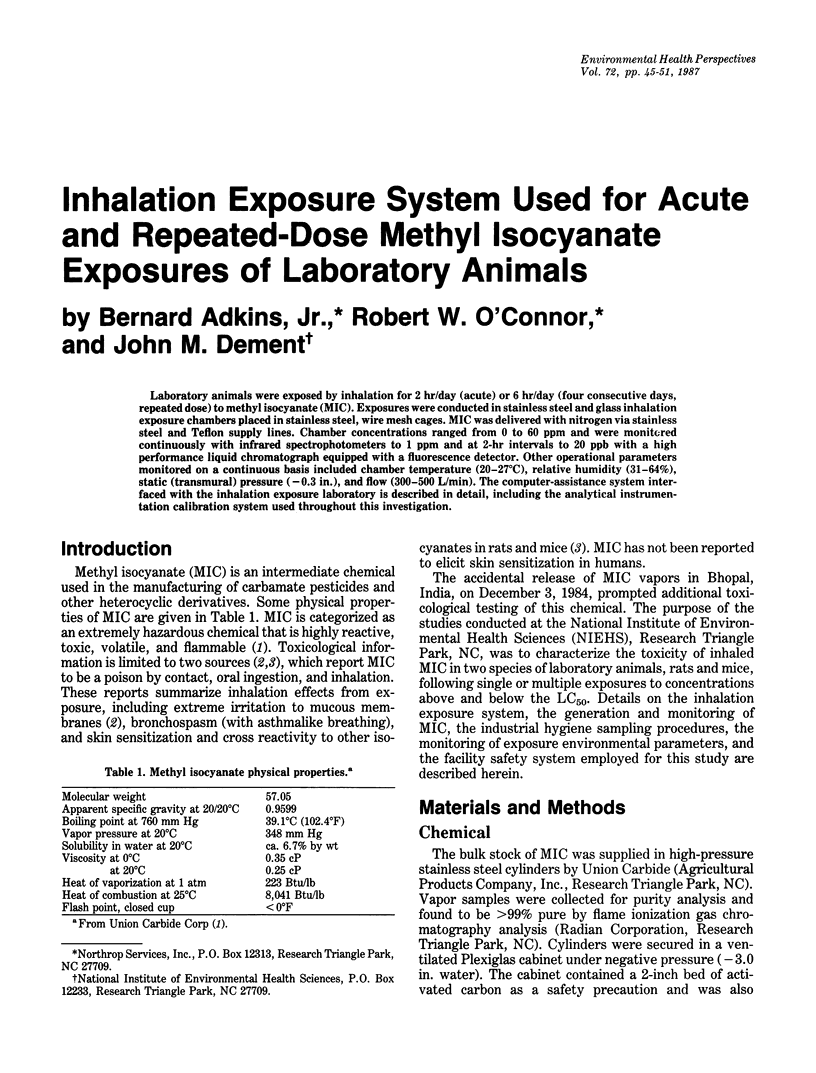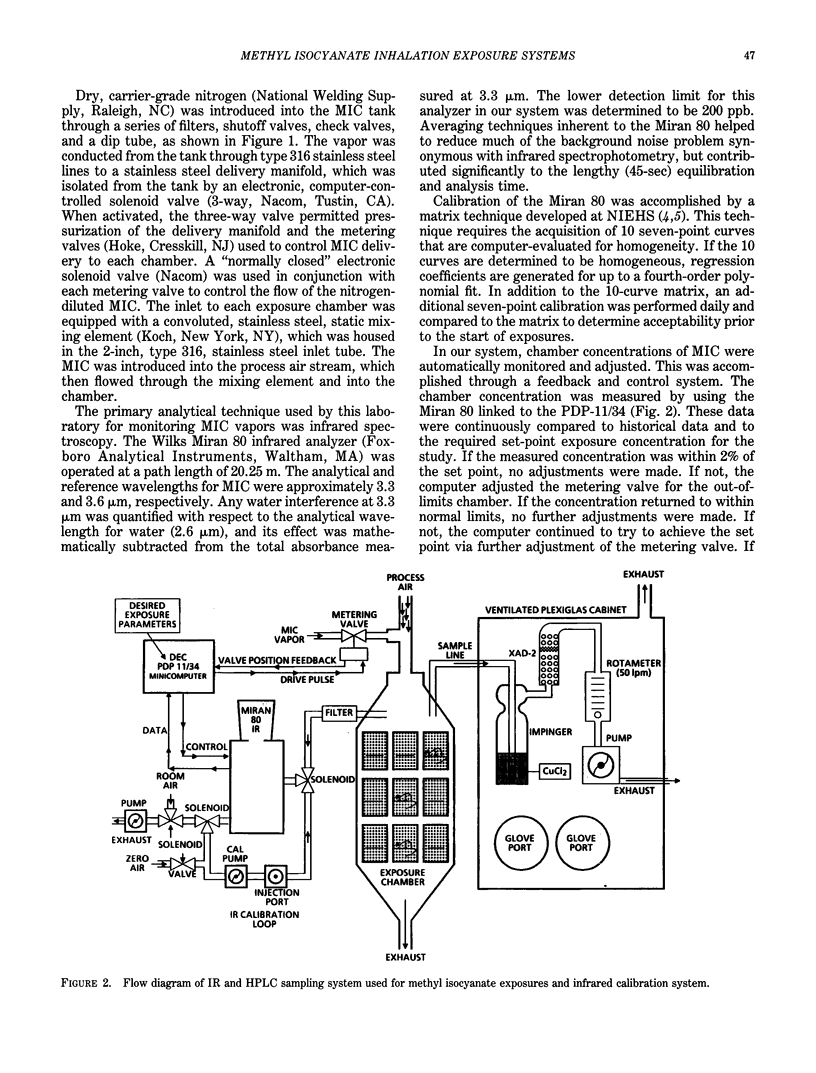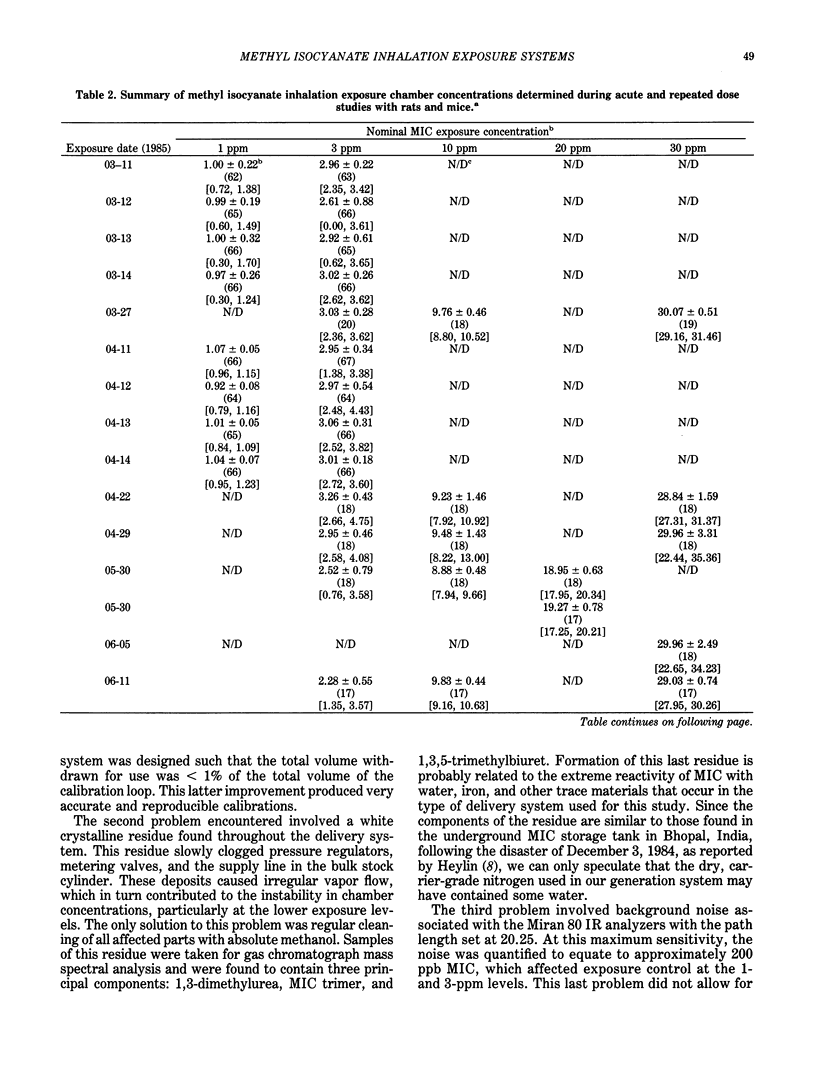Abstract
Laboratory animals were exposed by inhalation for 2 hr/day (acute) or 6 hr/day (four consecutive days, repeated dose) to methyl isocyanate (MIC). Exposures were conducted in stainless steel and glass inhalation exposure chambers placed in stainless steel, wire mesh cages. MIC was delivered with nitrogen via stainless steel and Teflon supply lines. Chamber concentrations ranged from 0 to 60 ppm and were monitored continuously with infrared spectrophotometers to 1 ppm and at 2-hr intervals to 20 ppb with a high performance liquid chromatograph equipped with a fluorescence detector. Other operational parameters monitored on a continuous basis included chamber temperature (20-27 degrees C), relative humidity (31-64%), static (transmural) pressure (-0.3 in.), and flow (300-500 L/min). The computer-assistance system interfaced with the inhalation exposure laboratory is described in detail, including the analytical instrumentation calibration system used throughout this investigation.
Full text
PDF






Selected References
These references are in PubMed. This may not be the complete list of references from this article.
- KIMMERLE G., EBEN A. ZUR TOXICITAET VON METHYLISOCYANAT UND DESSEN QUANTITATIVER BESTIMMUNG IN DER LUFT. Arch Toxikol. 1964 May 27;20:235–241. [PubMed] [Google Scholar]
- Van Stee E. W., Moorman M. P. Calibration of a system for the computer-assisted operation of a small animal inhalation facility. Environ Health Perspect. 1984 Mar;54:311–318. doi: 10.1289/ehp.8454311. [DOI] [PMC free article] [PubMed] [Google Scholar]


